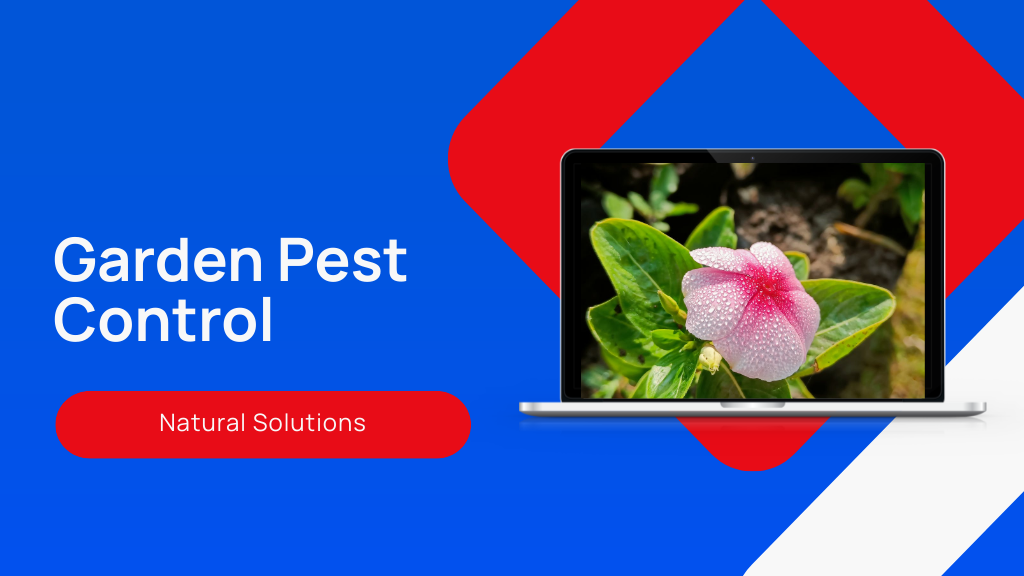
For effective garden pest control, embrace eco-friendly methods that promote healthy plants. Utilize companion planting, like pairing basil with tomatoes, to naturally deter pests. Implement barriers such as row covers and apply natural insecticides like neem oil. Regular monitoring helps catch infestations early, while beneficial insects, like ladybugs, maintain a balanced ecosystem. Remember to incorporate natural repellents, like herbs and essential oils, to protect your plants. Discover more techniques and tips to thrive while preventing pest issues.
Key Takeaways
- Implement companion planting by pairing plants that deter pests, like marigolds with tomatoes, to enhance growth and reduce infestations.
- Utilize natural insecticides, such as neem oil and diatomaceous earth, for effective pest control without harming beneficial insects.
- Regularly monitor plants for signs of pests or diseases, allowing for early intervention and tailored control strategies.
- Attract beneficial insects by planting a variety of flowers and native plants, providing nectar, and creating a balanced garden ecosystem.
- Use physical barriers like row covers and sticky traps to protect crops from pests while minimizing chemical exposure.
Eco-Friendly Pest Control for Sustainable Gardening
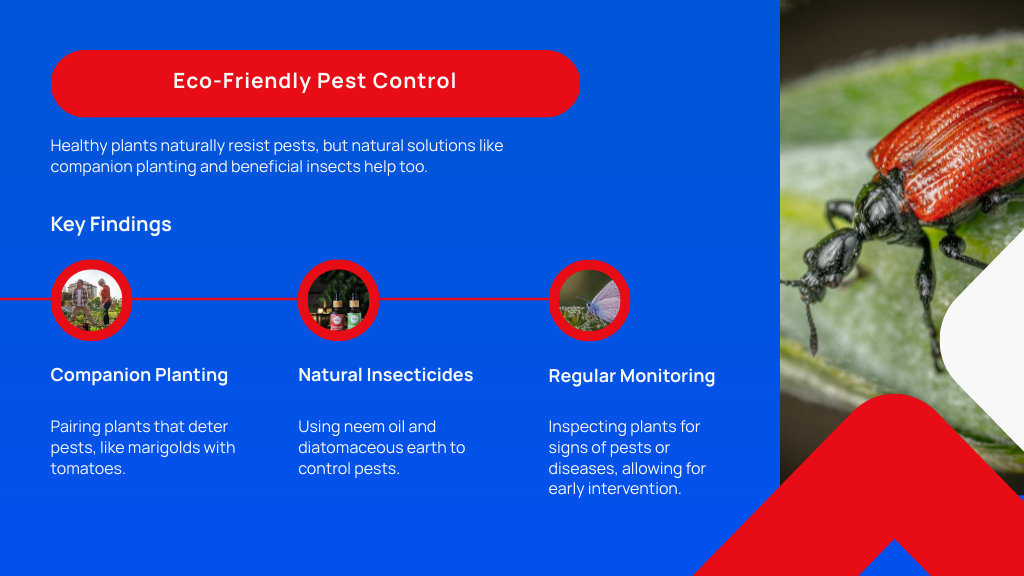
When you're aiming for a thriving garden, understanding eco-friendly pest control methods is vital, as these practices not only protect your plants but also promote a healthier ecosystem.
Embracing organic garden pest control means utilizing natural pest prevention techniques that minimize harm to beneficial insects. Start by introducing companion planting, where certain plants deter pests naturally. You can also use barriers like row covers to shield your crops.
Additionally, natural insecticides, such as neem oil or diatomaceous earth, effectively target unwanted pests without disrupting the environment. Regular monitoring is essential; inspect your plants frequently to catch infestations early.
Common Garden Pests and Their Impact
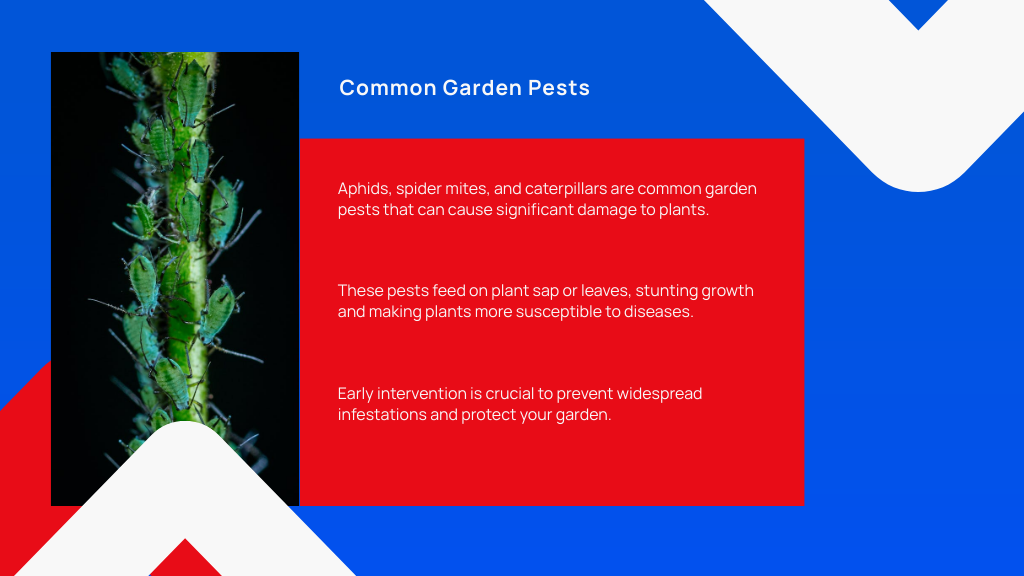
Understanding the types of pests that can invade your garden is key to effective pest management. Common garden pests, like aphids, spider mites, and caterpillars, can severely impact plant health by sucking sap or chewing leaves. These pests not only stunt growth but also make plants more susceptible to diseases. Implementing garden insect control is vital for maintaining a thriving garden ecosystem.
For instance, aphids can multiply rapidly, so early intervention is essential. By recognizing these pests early and knowing their behavior, you can tailor your garden insect control strategies to minimize damage. Joining gardening communities can also provide support as you share experiences and solutions to keep your plants healthy and vibrant.
Understanding Beneficial Insects
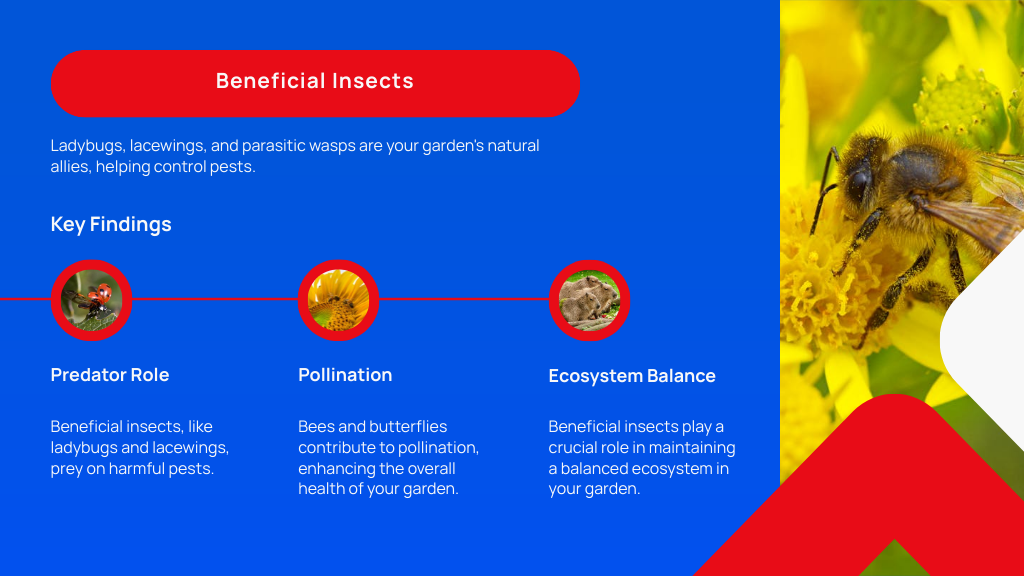
Beneficial insects play an essential role in maintaining a healthy garden ecosystem by naturally controlling pest populations. You'll encounter various types, such as ladybugs and lacewings, which actively prey on harmful pests. To foster these beneficial species, consider implementing specific practices that create a welcoming environment for them in your garden.
Types of Beneficial Insects
While many garden pests can wreak havoc on your plants, a variety of beneficial insects can serve as natural allies in pest control. Understanding these insects can help you foster a healthier garden ecosystem. Here are some key types:
| Insect Type | Role | Appearance |
|---|---|---|
| Ladybugs | Aphid predator | Red with black spots |
| Lacewings | Pest larvae feeder | Green, delicate wings |
| Parasitic Wasps | Parasitoids of pests | Small, often brown |
| Ground Beetles | Generalist predator | Dark, elongated body |
Role in Pest Control
In any garden, beneficial insects play a crucial role in maintaining balance and controlling pest populations. These insects, such as ladybugs and lacewings, are natural predators that help keep harmful pests like aphids and caterpillars in check. By preying on these pests, they prevent overpopulation, which can lead to significant damage to your plants.
Additionally, certain beneficial insects, like bees, contribute to pollination, enhancing the overall health and productivity of your garden. Understanding their role is essential; when you nurture these allies, you create a thriving ecosystem.
Implementing strategies like planting diverse flowers or minimizing pesticide use can attract and support these beneficial species, allowing them to flourish and protect your garden naturally.
Encouraging Beneficial Species
Creating an environment that supports beneficial insects can greatly enhance your garden's health. Start by planting a diverse array of native flowers, as these attract pollinators like bees and butterflies. Incorporate herbs such as dill, fennel, and parsley, which lure predatory insects like ladybugs and lacewings.
Avoid broad-spectrum pesticides, as they can harm these helpful species. Instead, focus on organic alternatives that preserve their populations. Providing habitats, such as small piles of rocks or logs, creates shelter for beneficial insects. Maintain a balanced ecosystem by encouraging natural pest predators, which reduces the need for chemical interventions.
Natural Repellents: Herbs and Oils
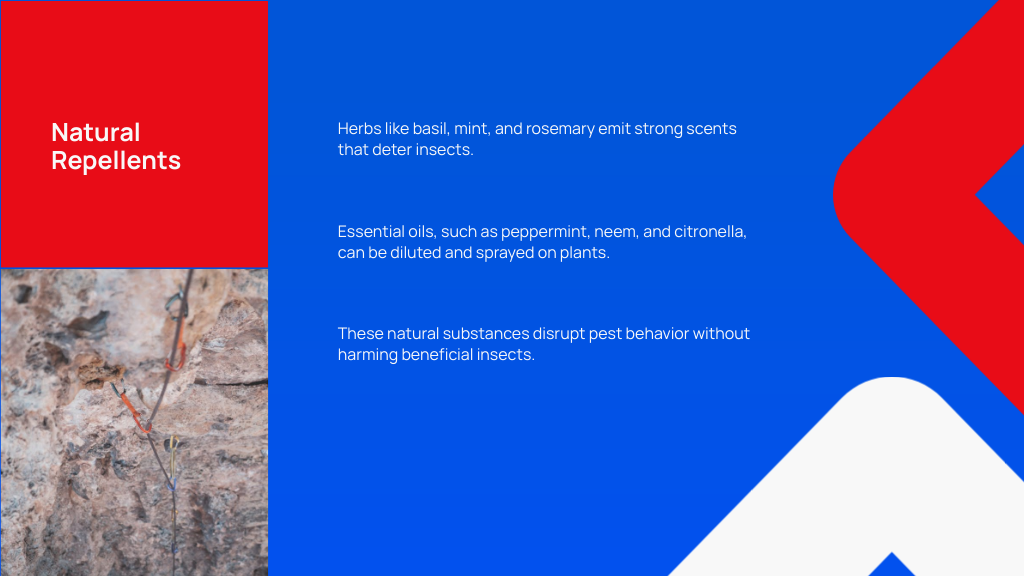
Natural repellents, derived from herbs and essential oils, offer an effective and environmentally friendly solution for managing garden pests. You can utilize herbs like basil, mint, and rosemary, which emit strong scents that deter insects.
Essential oils, such as peppermint, neem, and citronella, can be diluted with water and sprayed on plants to create a protective barrier. These natural substances disrupt pest behavior without harming beneficial insects.
To maximize effectiveness, consider planting these herbs around your garden or using them in potpourri to create a pest-repelling atmosphere. Remember to reapply after rain or watering, as these oils may dissipate.
Homemade Organic Sprays
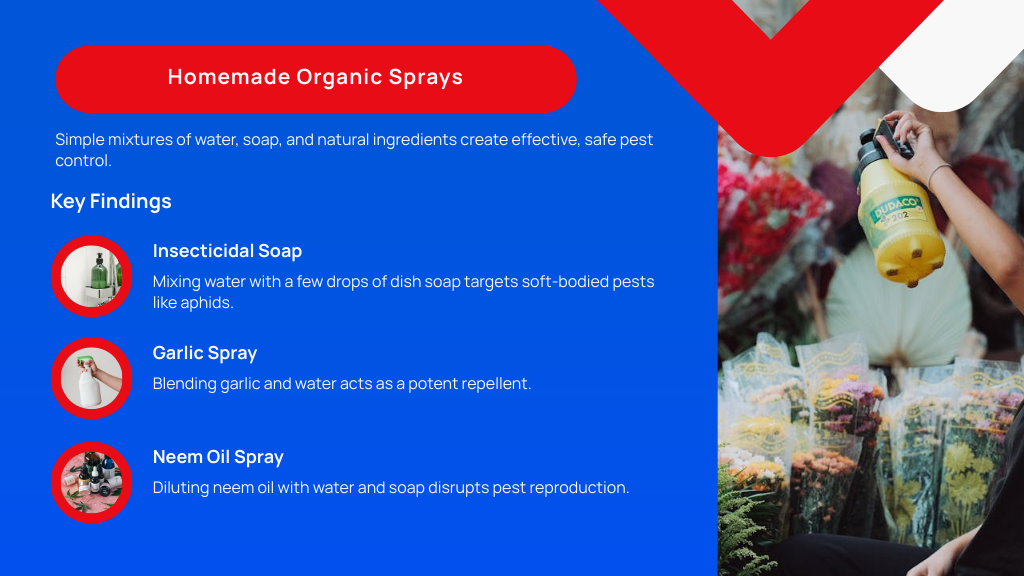
While you may think that commercial pesticides are the only option for managing pests, homemade organic sprays can be just as effective and much safer for your garden. For instance, mixing water with a few drops of dish soap creates a simple insecticidal soap that targets soft-bodied pests like aphids.
Alternatively, a blend of garlic and water acts as a potent repellent. To create a neem oil spray, dilute neem oil with water and a mild soap, effectively disrupting pest reproduction. Essential oils like peppermint or eucalyptus can also be infused into water for an aromatic deterrent. Remember to test any spray on a small plant section first, ensuring your plants remain healthy while keeping those pesky invaders at bay.
Companion Planting Techniques
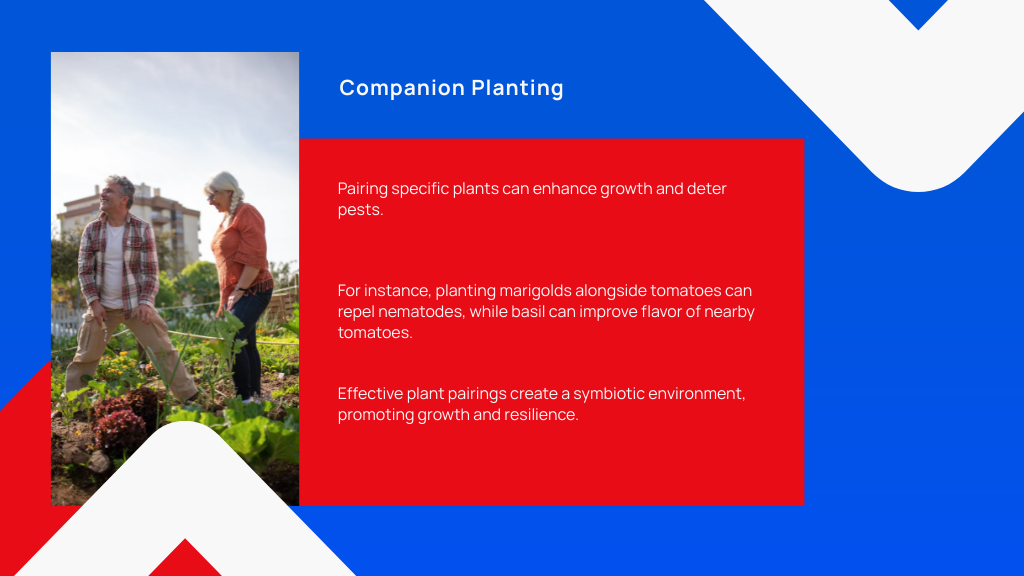
Companion planting is a strategic approach that involves pairing specific plants to enhance growth and deter pests. For instance, planting marigolds alongside tomatoes can repel nematodes, while basil can improve the flavor of nearby basil. Understanding effective plant pairings not only boost your garden's health but also creates a natural pest control system.
Effective Plant Pairings
Understanding effective plant pairings can markedly enhance your garden's health and productivity. By strategically placing compatible plants together, you can create a symbiotic environment that promotes growth and resilience.
For instance, planting basil alongside tomatoes not only improves flavor but also helps deter pests like aphids. Similarly, marigolds can be interspersed among vegetables to attract beneficial insects.
When you combine deep-rooted plants like carrots with shallow-rooted herbs, you optimize space and resource utilization. Additionally, using legumes to fix nitrogen in the soil can benefit neighboring plants, fostering a thriving ecosystem.
Embracing these pairings cultivates a sense of community within your garden, leading to a vibrant and healthy green space that reflects your dedication and care.
Pest Deterrent Benefits
As you explore the benefits of companion planting, you'll find that certain plant combinations can greatly deter pests from invading your garden. For instance, planting marigolds alongside vegetables can repel nematodes and aphids due to their natural oils. Similarly, basil planted near tomatoes not only enhances flavor but also wards off whiteflies and spider mites.
These companion plants create a chemical barrier that confuses or repels pests, reducing the need for chemical pesticides. Additionally, diverse plantings attract beneficial insects, like ladybugs, which prey on harmful pests.
Using Neem Oil for Pest Management
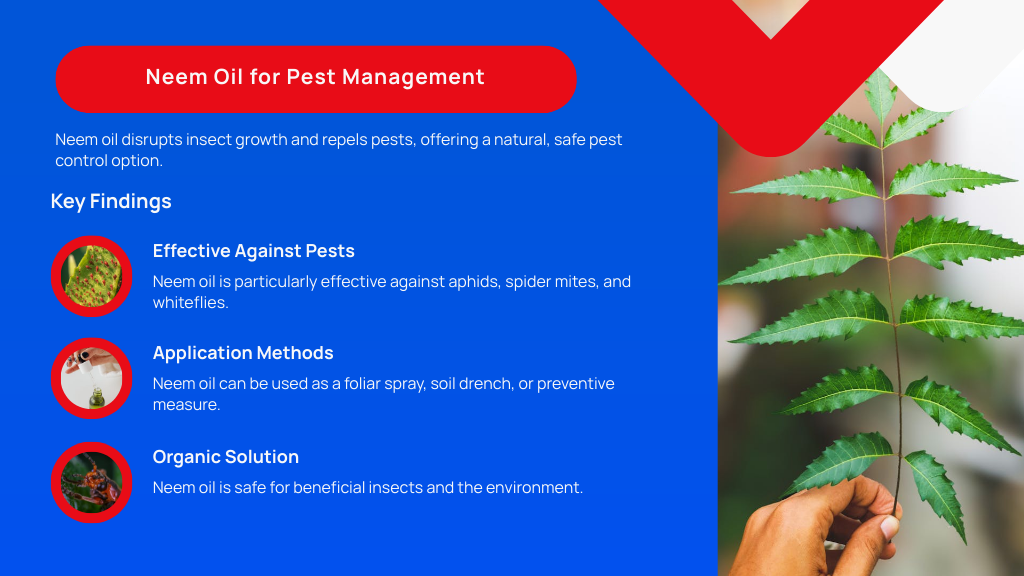
While many gardeners seek effective and eco-friendly solutions for pest control, neem oil emerges as a powerful ally in managing infestations. Derived from the seeds of the neem tree, this natural pesticide disrupts insect growth and repels pests. It's particularly effective against aphids, spider mites, and whiteflies. To utilize neem oil, mix it with water and a mild soap, then spray it on affected plants, ideally during the cooler parts of the day.
| Application Method | Pros |
|---|---|
| Foliar Spray | Targets visible pests |
| Soil Drench | Prevents root pests |
| Preventive Measure | Reduces future infestations |
| Organic Solution | Safe for beneficial insects |
Attracting Predatory Insects
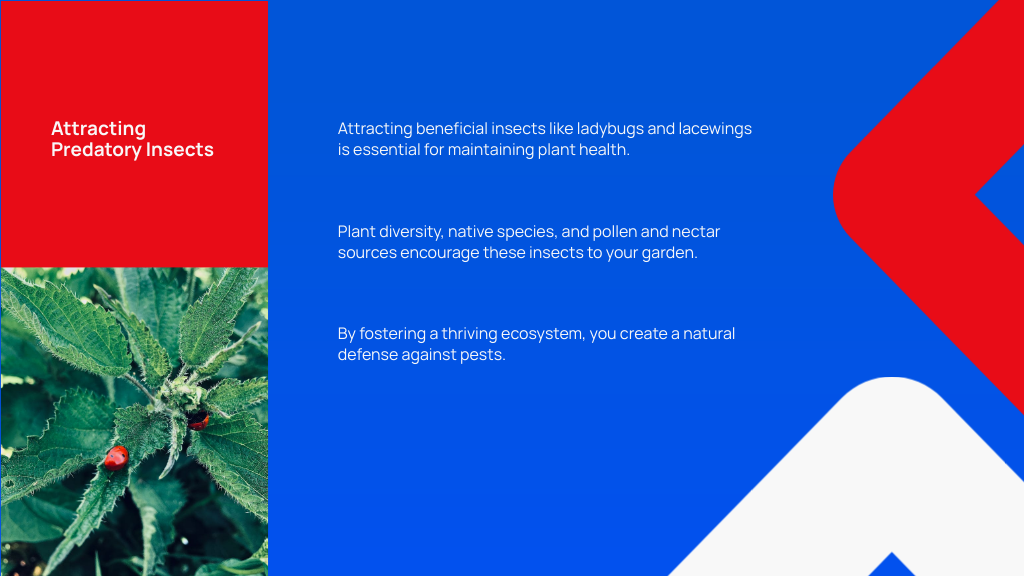
Incorporating natural pest control methods like neem oil can set the stage for promoting a balanced ecosystem in your garden, where beneficial predatory insects can thrive. Attracting these insects is vital for maintaining plant health. Here are three effective strategies to encourage their presence:
- Plant Diversity: Include a variety of flowering plants that bloom at different times to provide a continuous food source for predatory insects like ladybugs and lacewings.
- Native Plants: Use native species to attract local predators, as they're adapted to your environment and provide essential habitat.
- Pollen and Nectar Sources: Choose plants like dill, fennel, or yarrow, which produce abundant pollen and nectar, enticing beneficial insects to your garden.
Traps and Barriers for Pest Control
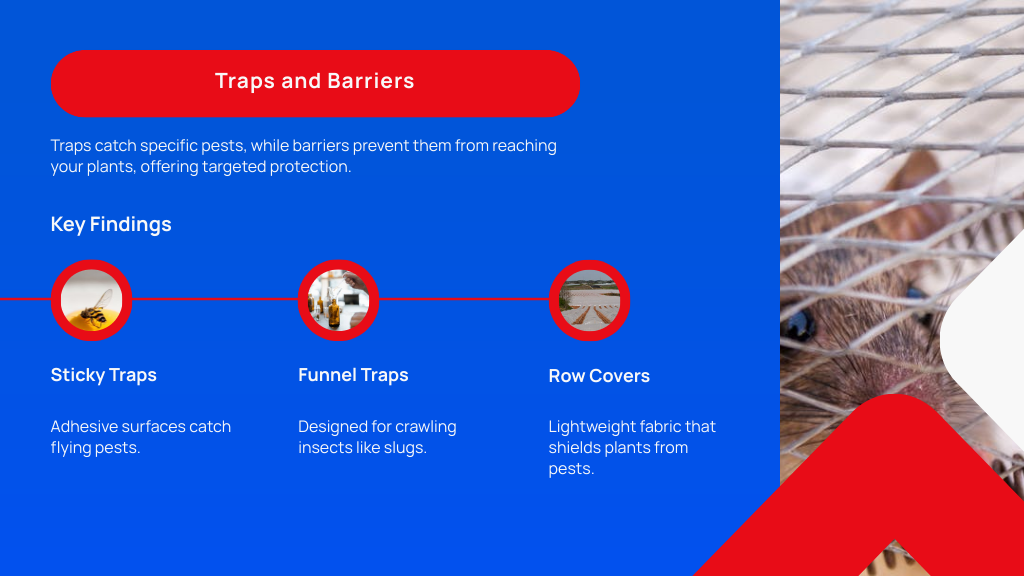
To effectively manage pests in your garden, employing traps and barriers can provide a targeted approach that minimizes chemical use. Traps help catch specific pests, while barriers prevent them from reaching your plants. Here's a breakdown of common traps and barriers:
| Type | Description |
|---|---|
| Sticky Traps | Adhesive surfaces catching flying pests |
| Funnel Traps | Designed for crawling insects like slugs |
| Row Covers | Lightweight fabric that shields plants |
| Fencing | Physical barriers against larger pests |
| Soil Barriers | Diatomaceous earth to deter soil pests |
Implementing these methods not only protects your plants but also fosters a healthier ecosystem in your garden. With these strategies, you'll cultivate a thriving space while promoting sustainable practices.
The Role of Beneficial Microorganisms
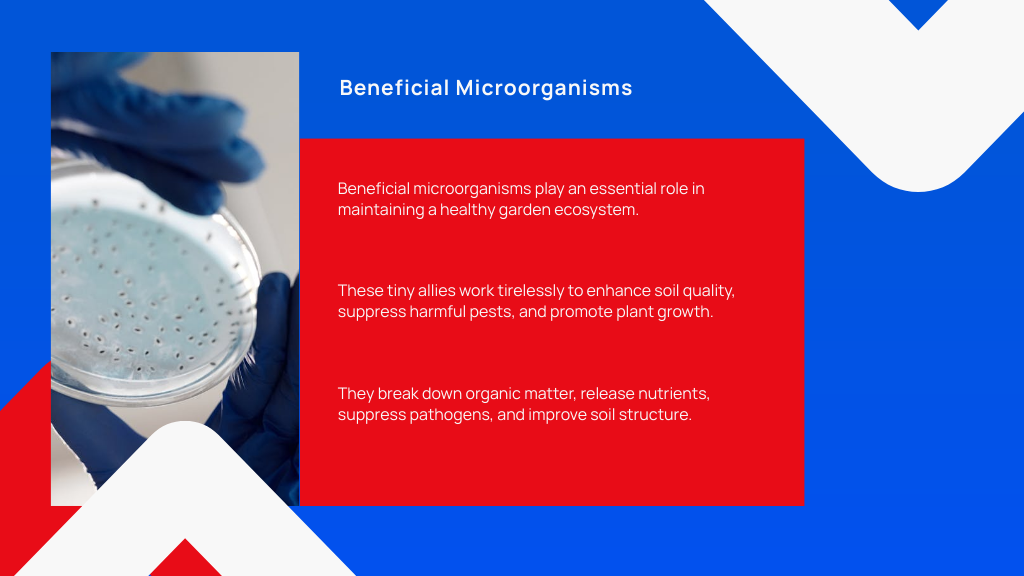
Beneficial microorganisms play an essential role in maintaining the health and balance of your garden's ecosystem. These tiny allies work tirelessly to enhance soil quality, suppress harmful pests, and promote plant growth.
Here are three key benefits they provide:
- Nutrient Cycling: They break down organic matter, releasing essential nutrients that plants need to thrive.
- Disease Suppression: Beneficial microorganisms outcompete harmful pathogens, reducing the risk of disease in your plants.
- Soil Structure Improvement: They help aggregate soil particles, improving aeration and water retention, which is crucial for root health.
Implementing Crop Rotation
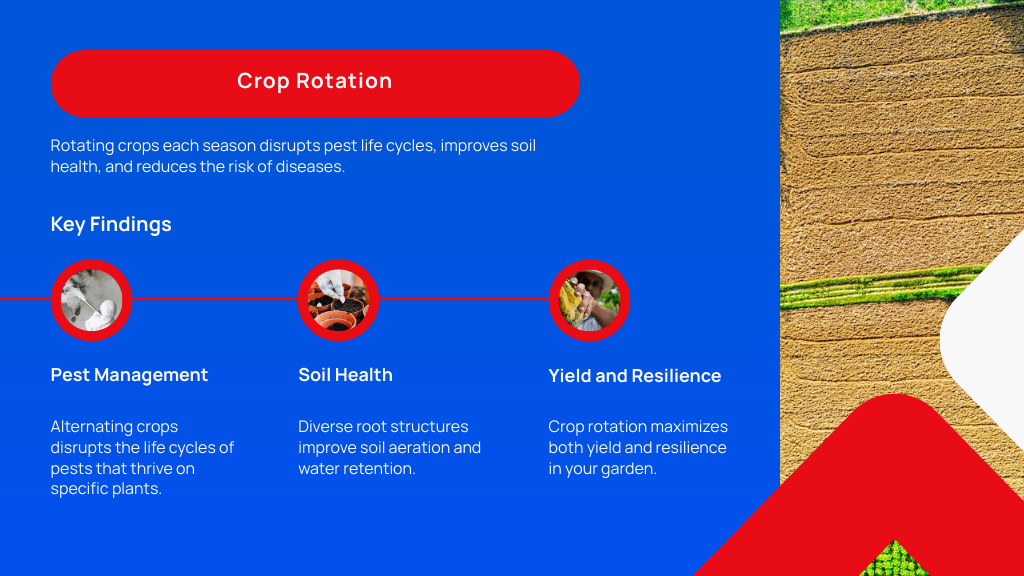
Crop rotation is a powerful strategy for maintaining soil health and managing pests in your garden. By alternating the types of crops you plant in specific areas each season, you disrupt the life cycles of pests and diseases that thrive on particular plants.
For instance, if you grow tomatoes in one area this year, consider planting legumes next year. This not only helps reduce pest populations but also enhances soil nutrients.
Additionally, diverse root structures improve soil aeration and water retention. Planning your rotation carefully guarantees that you're maximizing both yield and resilience.
Maintaining Soil Health for Pest Prevention
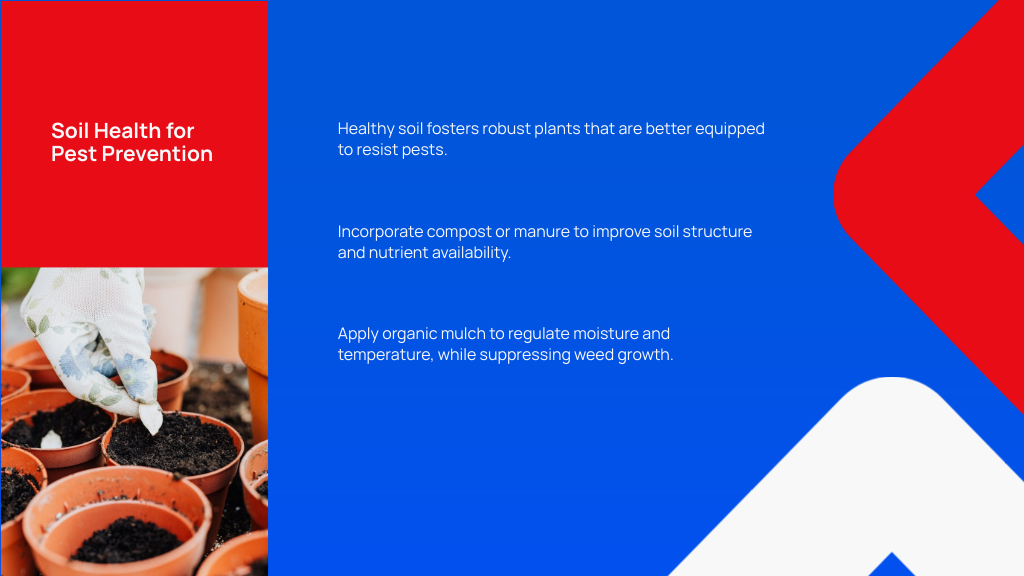
While maintaining soil health might seem like a secondary concern, it plays an essential role in pest prevention. Healthy soil fosters robust plants that are better equipped to resist pests.
Here are three key practices to enhance your soil health:
- Add Organic Matter: Incorporate compost or well-rotted manure to improve soil structure and nutrient availability.
- Practice Mulching: Apply organic mulch to regulate moisture and temperature, while suppressing weed growth that can harbor pests.
- Test Soil Regularly: Conduct soil tests to determine pH and nutrient levels, allowing for targeted amendments that support plant health.
Monitoring and Early Detection
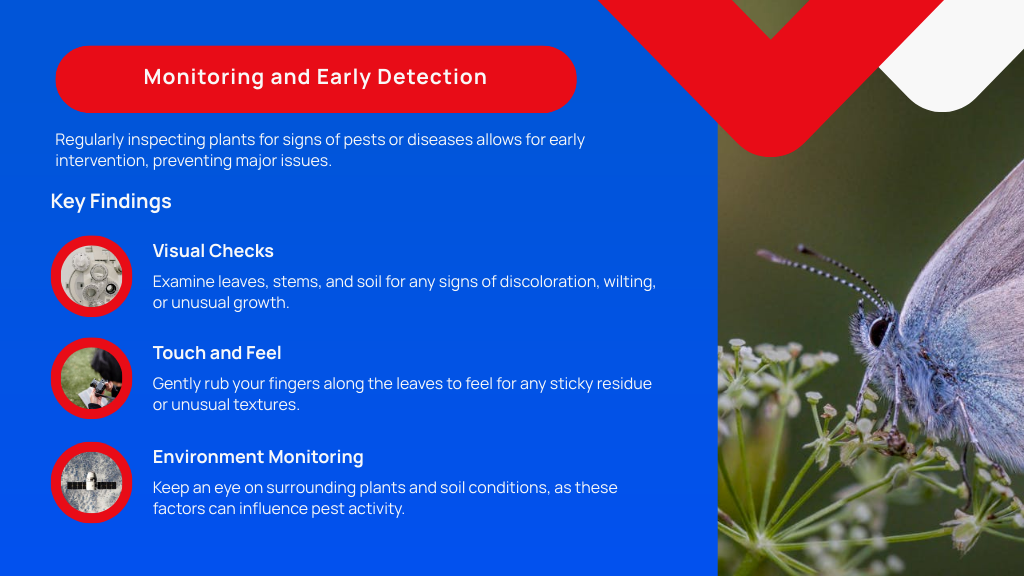
To effectively manage pests in your garden, regular plant inspections are essential. By closely monitoring your plants, you can identify pest symptoms early, such as discoloration or unusual spots. This proactive approach not only helps in controlling infestations but also promotes healthier plant growth.
Regular Plant Inspections
Regular plant inspections are crucial for maintaining a healthy garden, as they enable early detection of pests and diseases that could threaten your plants. By routinely checking your plants, you can protect their vigor and guarantee a thriving garden. Here are three key steps to follow during your inspections:
- Visual Checks: Examine leaves, stems, and soil for any signs of discoloration, wilting, or unusual growth patterns.
- Touch and Feel: Gently rub your fingers along the leaves to feel for any sticky residue or unusual textures.
- Monitor Environment: Keep an eye on surrounding plants and soil conditions, as these factors can influence pest activity.
Regular inspections help foster a sense of community among gardeners, as sharing findings can lead to collective solutions and support.
Identifying Pest Symptoms
Identifying pest symptoms is essential for effective monitoring and early detection, as timely intervention can prevent significant damage to your garden. By observing your plants closely, you can catch issues before they escalate. Here's a quick reference table to help you recognize common pest symptoms:
| Symptom | Possible Pest |
|---|---|
| Yellowing leaves | Aphids, spider mites |
| Holes in leaves | Caterpillars, beetles |
| Sticky residue | Scale, aphids |
| Wilting or drooping | Root aphids, nematodes |
Pay attention to these signs during your regular inspections. The sooner you identify a pest issue, the more effective your natural control measures can be. This proactive approach fosters a thriving, healthy garden for everyone to enjoy.
Creating a Balanced Garden Ecosystem
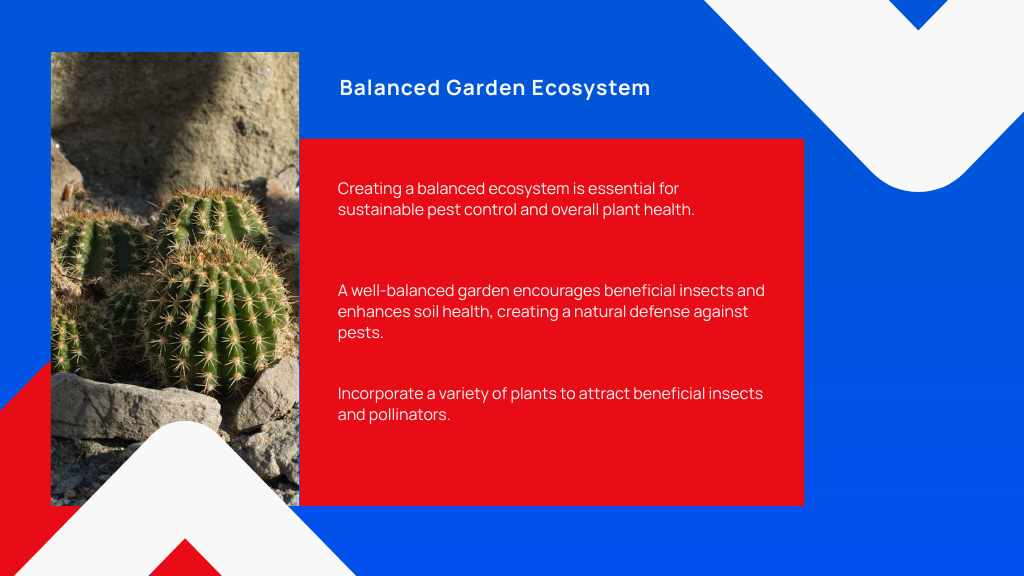
While cultivating a garden, achieving a balanced ecosystem is essential for sustainable pest control and overall plant health. A well-balanced garden encourages beneficial insects and enhances soil health, creating a natural defense against pests.
Here are three key strategies to foster this balance:
- Diverse Planting: Incorporate a variety of plants to attract different beneficial insects and pollinators, which helps maintain a natural balance.
- Companion Planting: Pair plants that support each other, like marigolds with tomatoes, to deter pests naturally and boost growth.
- Natural Predators: Introduce or encourage natural predators like ladybugs and lacewings, which feed on common pests, reducing their populations.
Resources for Further Learning on Natural Pest Control

To enhance your understanding of natural pest control, consider exploring recommended reading materials that offer in-depth insights and practical strategies. Additionally, numerous online educational platforms provide courses and resources tailored to various skill levels, making it easier to implement effective techniques in your garden. Utilizing these resources can greatly improve your pest management practices and contribute to a healthier ecosystem.
Recommended Reading Materials
As you explore the world of natural pest control, you'll find an abundance of resources that can enhance your understanding and effectiveness.
Here are three recommended reading materials to guide your journey:
- The Organic Gardener's Handbook of Natural Pest and Disease Control: This extensive guide covers various organic methods and practical solutions for managing pests and diseases.
- Pest Control for Organic Gardeners: A detailed resource that focuses on eco-friendly approaches to pest management, highlighting plant-based solutions.
- Attracting Beneficial Bugs to Your Garden: This book helps you understand how to create a balanced ecosystem by attracting natural predators that can help control pest populations.
These materials will deepen your knowledge and empower you to cultivate a thriving, healthy garden.
Online Educational Platforms
If you're looking to expand your knowledge of natural pest control, online educational platforms offer a wealth of resources that can enhance your understanding and skills. These platforms provide courses, videos, and forums where you can connect with experts and fellow learners.
| Platform | Features | Cost |
|---|---|---|
| Coursera | University-led courses | Free/Paid |
| Udemy | Diverse topics, user reviews | Varies |
| YouTube | Free tutorials, community input | Free |
| Skillshare | Hands-on projects | Subscription |
| MasterClass | Expert-led sessions | Subscription |
Engaging with these resources allows you to learn at your own pace while fostering a sense of community among like-minded individuals passionate about sustainable gardening practices.
Conclusion
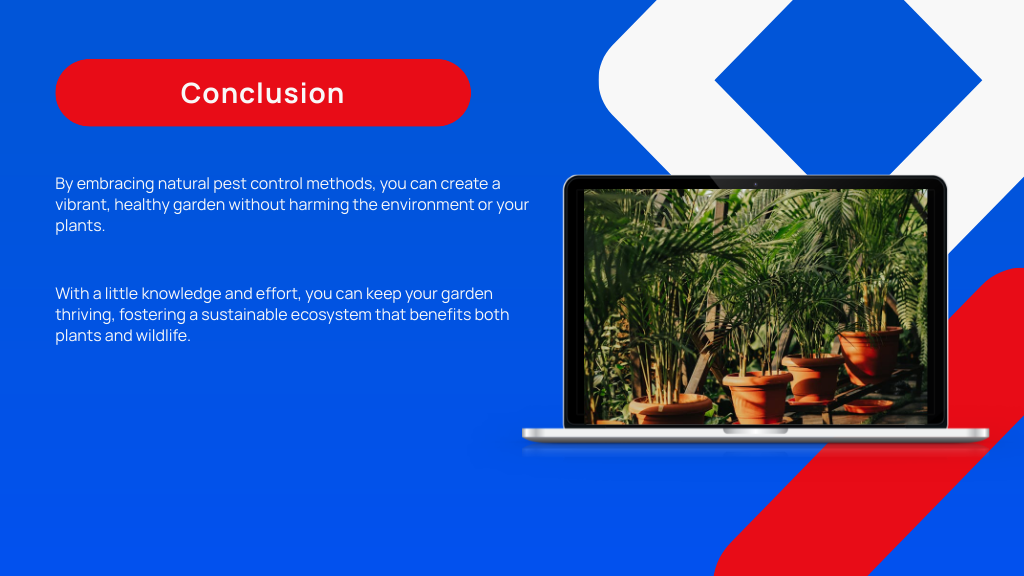
In your garden, think of pests as unwelcome guests at a dinner party. Just like you wouldn't let them disrupt your evening, you can use natural solutions to keep your plants healthy and thriving. By creating a balanced ecosystem, monitoring for signs of trouble, and employing homemade remedies, you're not just protecting your plants—you're nurturing a sustainable environment. Remember, a healthy garden is like a well-tended relationship: it flourishes with care and attention.

